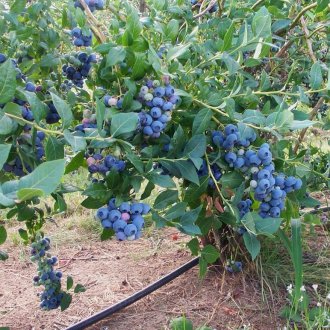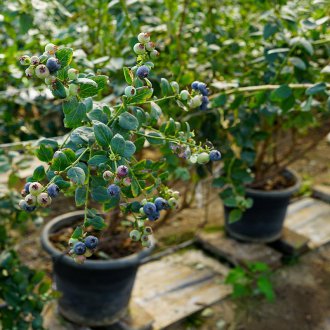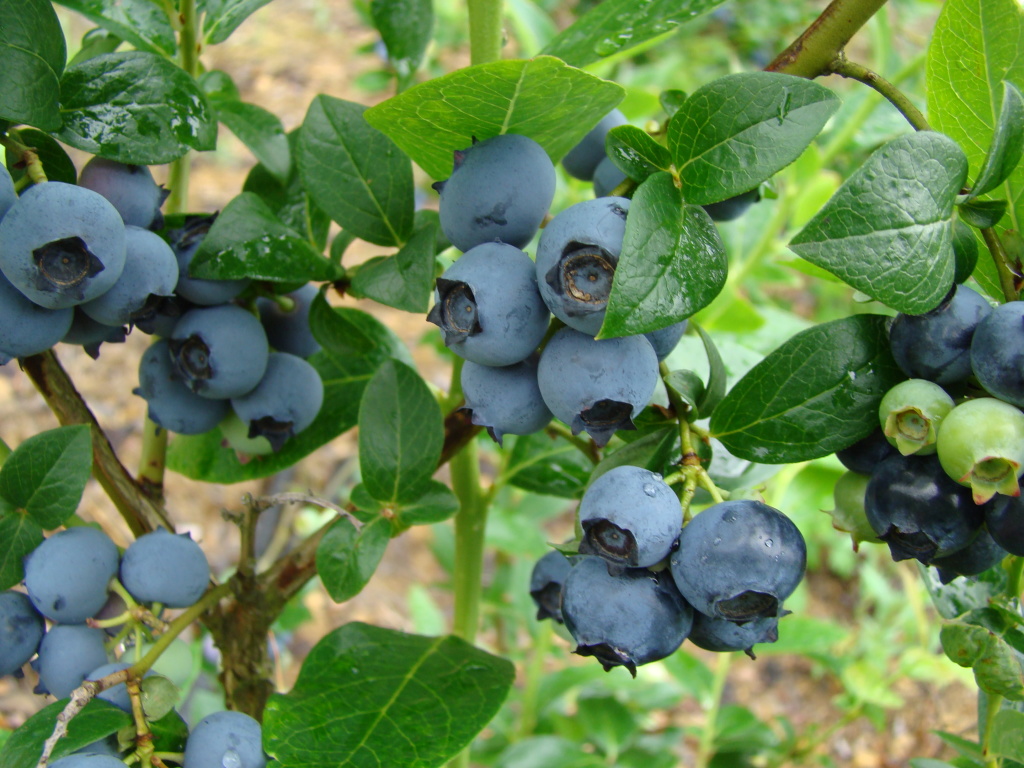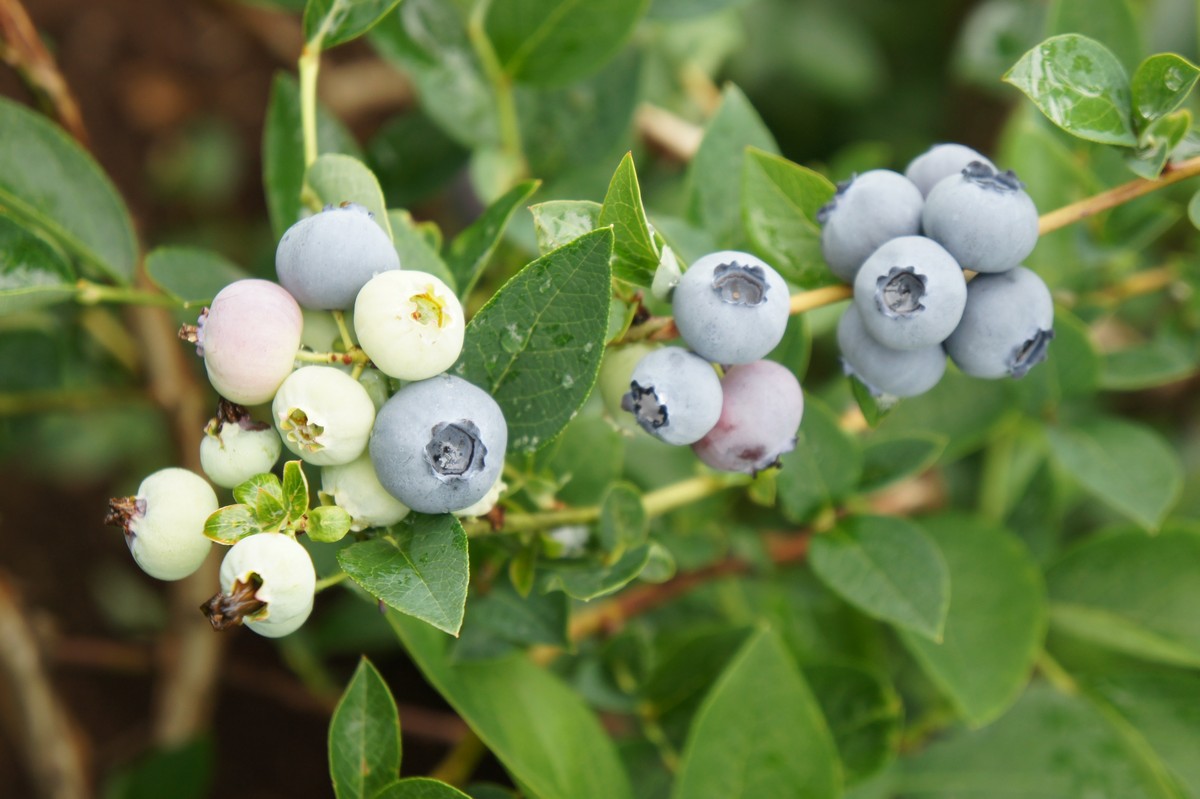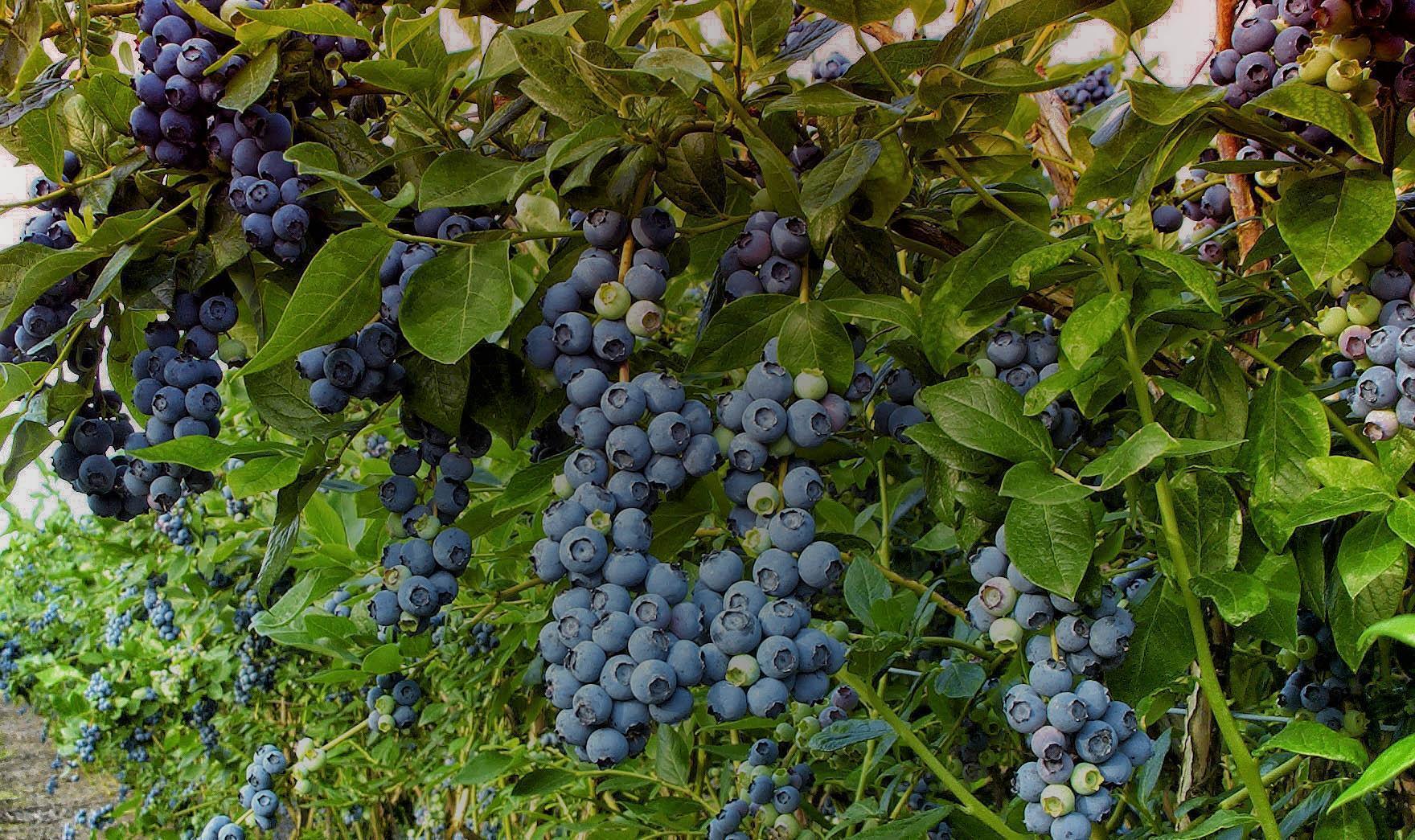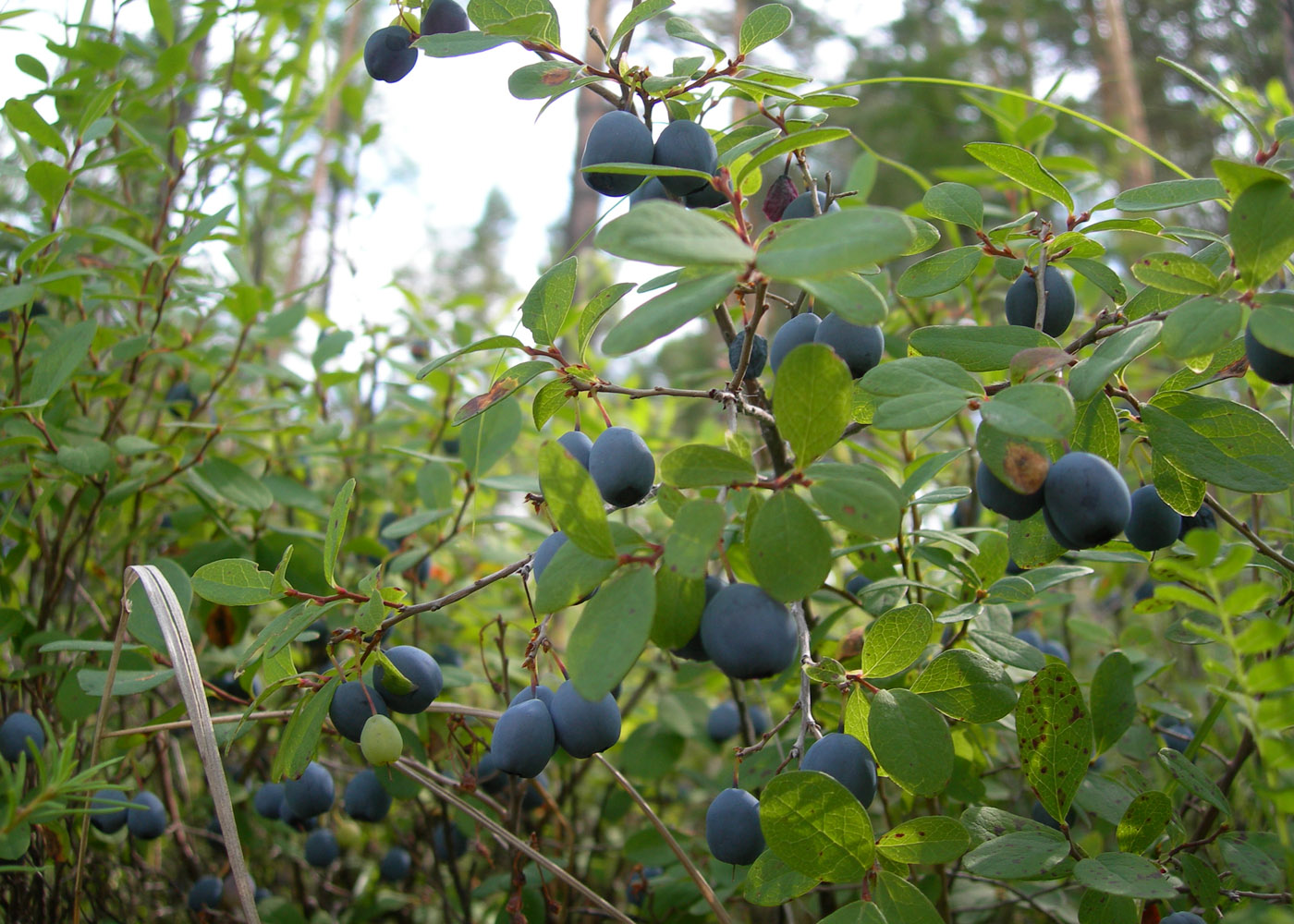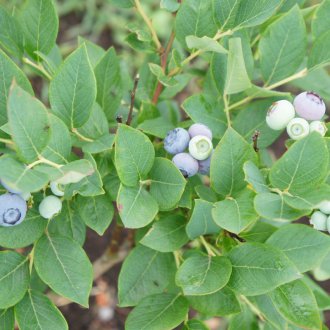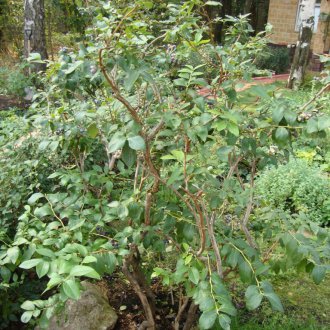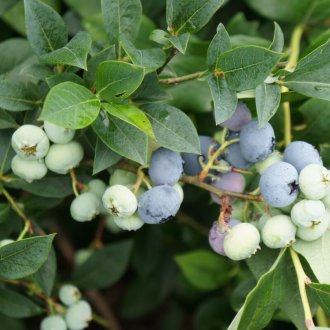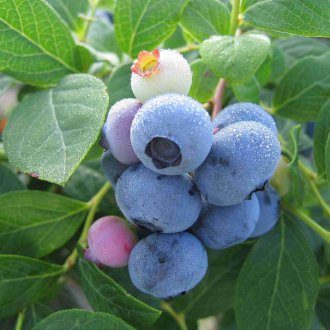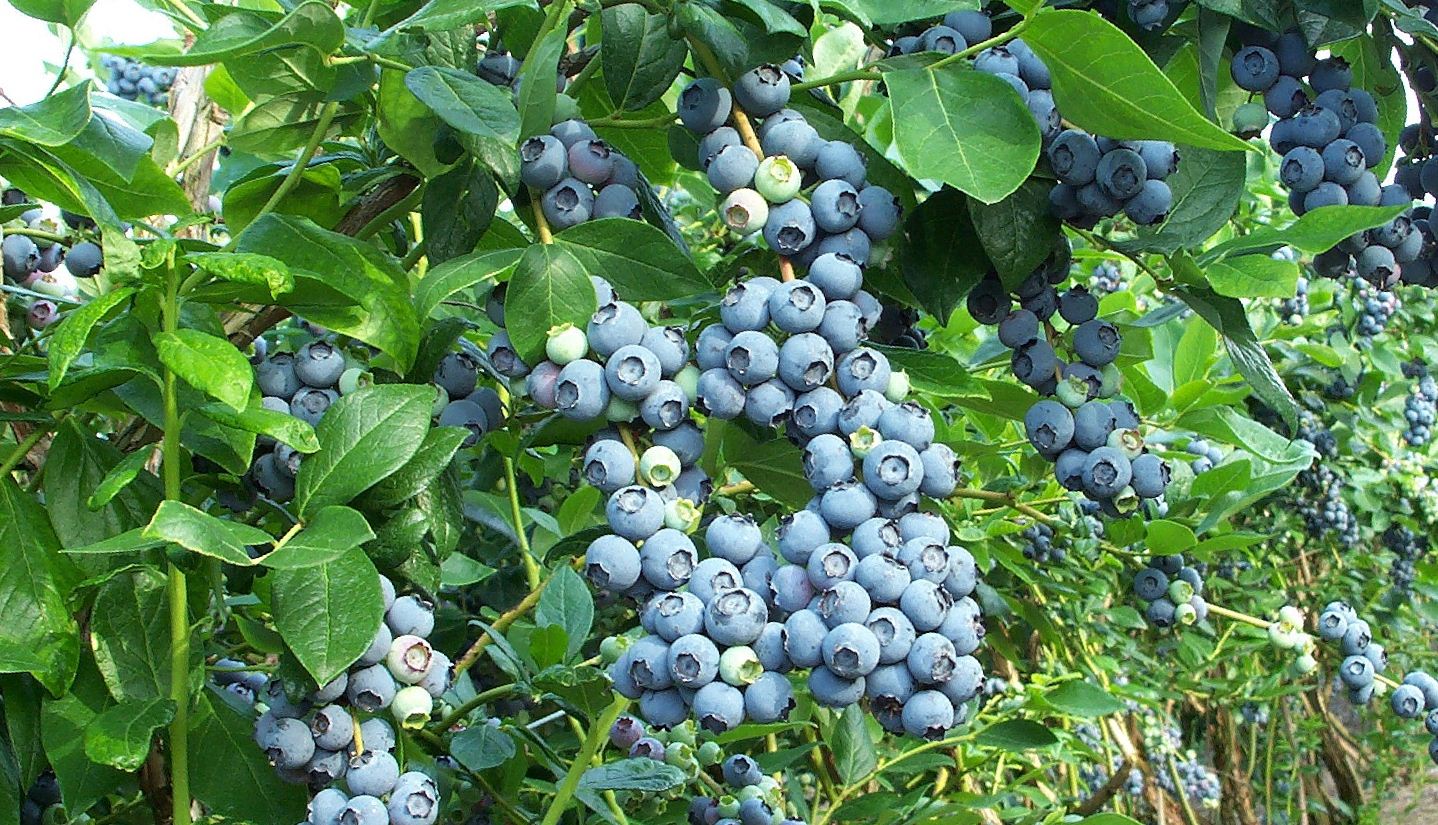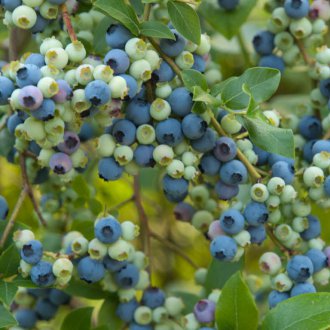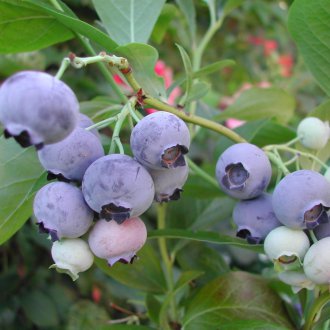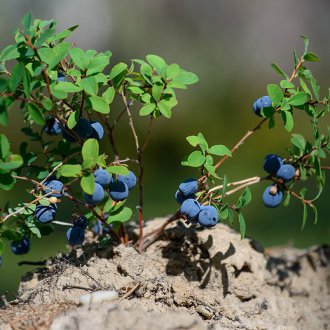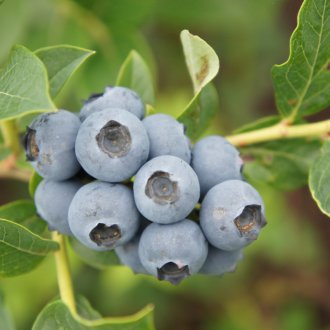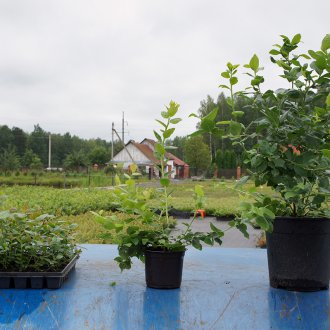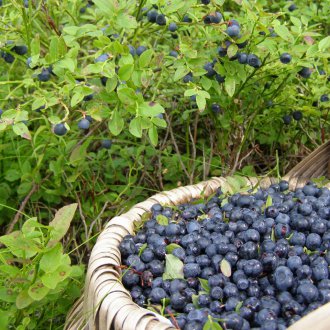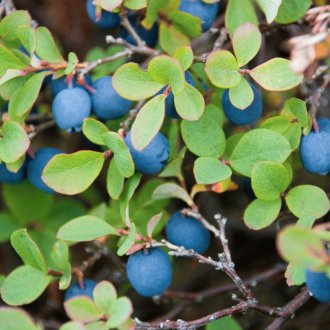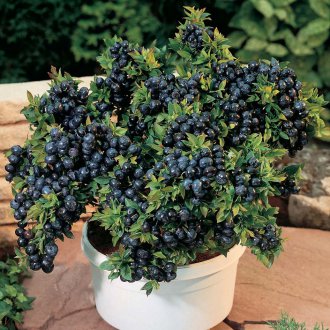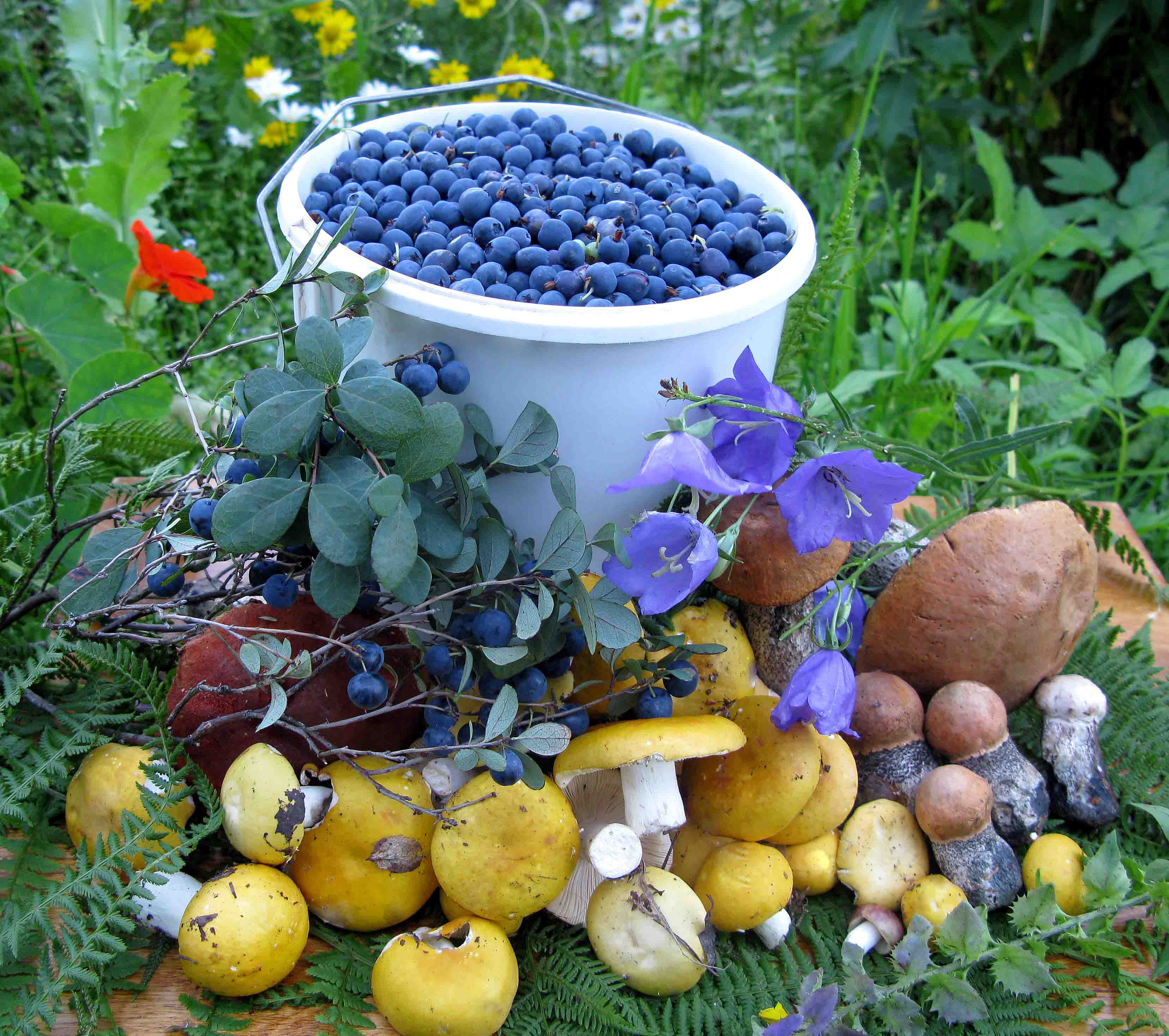Garden blueberry: care features (22 photos)
Content
A surprisingly healthy berry is garden blueberries. How to plant blueberries in your area to be always with the crop?
Large, sweet, slightly acidic berries of garden blueberries are especially loved by children. Outwardly, the berries are very similar to blueberries: the same dark blue, almost black, but covered with a whitish bloom, which conceals the dark color of the berries, making it blue. Garden blueberries, unlike blueberries, do not stain the skin.
In Canada, North America and Europe, garden blueberries are popular. Significant areas are allocated for its cultivation. From berries, jams, preserves are prepared, frozen. Baking with the addition of garden blueberries looks very impressive and has a pleasant taste.
A drunk glass of freshly squeezed garden blueberry juice provides the daily norm of vitamins and minerals necessary for the body. Berries do not cause allergies, rather, on the contrary, weaken its manifestations. The high content of vitamins, micro and macro elements improves overall health, it is especially beneficial to use garden blueberries during colds due to the content of flavonoids and antioxidants. Berries are in the lead in iron content, which is available in a form that is readily digestible and has a low calorie content of only 40 kcal.
Preparing soil for garden blueberries
The benefits of eating garden blueberries are significant. Knowing this, many gardeners are not without success growing blueberries in the garden. And those who just want to plant a plant should know that the cultivation of garden blueberries is a simple process, if certain agrotechnical requirements and conditions for the growth of plants are observed.
Garden blueberries grow well in sunny areas that are protected from the winds, loves sandy loam and loam, i.e. light soils that are well-drained and allow oxygen to flow deep into. In the shade of the trees, the crop is reduced, and the berries are smaller.
The soil for blueberries should be set aside with an acidity pH of 3.5, 5-4.5. Plants such as horsetail, mint or sorrel will suggest that the soil is acidic. Or use indicator paper to determine acidity, which can be purchased at garden stores.
It is important to determine the acidity of the soil for this culture, since the plant, not having roots of hairs to absorb dissolved minerals, exists in symbiosis with mycelium, which also delivers nutrition and moisture for garden blueberries. It is for mycorrhiza that acidic soil is needed. Mycorrhiza - this is the mutually beneficial existence of the mycelium and the roots of the plant.
How to increase the acidity of the soil?
Soil acidity can be increased using simple methods:
- The introduction of sulfur 40-100 g / 1 square. m of soil at the same time as digging the land, preferably a year before the planned planting;
- The introduction of iron sulfate 50 g / 1 sq. m of soil;
- The introduction of fresh peat (high) 1.2-2 kg / 1 sq. m;
- Citric acid - 2 tbsp. l dilute in a bucket of water - 10 liters, pour 1 square. m of soil;
- Dissolve 100 g of 9% acetic or malic acid in a bucket of water - 10 l, use the prepared solution for watering 1 sq. M. m of soil;
- Dissolve 40-50 ml of electrolyte for batteries in 10 l of water and use 1 sq. M for irrigation. m of soil.For soil acidification, only a new electrolyte is suitable, and not spent.
A single application of solutions and fertilizers will not be enough, therefore, during the vegetative period of garden blueberries, repeat the application procedure 2-3 times.
If it is possible to plant garden blueberries on soils that have not been developed before, then you should definitely use it, since the plant does not tolerate the presence of cultural predecessors, but grows well after perennial grasses. Otherwise, hold the ground on which you plan to plant garden blueberries under steam for several years.
Landing and care
Planting is carried out in spring or autumn, the spring period is preferable, as the seedlings have a margin of time for adaptation, and in the autumn period there is a risk of frost, then the plants will die or freeze, and in the spring such plants will have a harder time moving away from damage.
How to plant blueberries?
If you have decided on the place of planting, the following question arises: how to plant blueberries correctly? Proceed as follows:
- Prepare pits whose depth does not exceed 0.5 m, width 60x60 cm, loosen the edges of the soil in the pit, especially if planting on previously uncultivated lands;
- Pour horse peat, river sand, sawdust and fallen needles into the prepared pit. Mix everything and spill with any solution for acidification of the soil, add sulfur or iron sulfate;
- The distance between the planting pits should be at least a meter, if you decide to plant garden blueberry bush varieties;
- If you purchased seedlings in a nursery or in a store where they are most often sold in any containers, be sure to place the container in water for about 20 minutes before planting. This will soften the earthball;
- Next, release the seedling from the pot or container, mash your hands with the planting substrate in which the plant is located, try to carefully straighten the roots, especially if they are intertwined;
- The seedling is ready for planting in a permanent place. The plant should be buried about 5 cm from the level at which it was in the pot;
- Water the seedling well; mulch the surface around with sawdust. The use of mulch protects against drying out of the soil, from the appearance of a crust on it, which prevents the penetration of oxygen, from the appearance of weeds, in winter it will protect it from freezing. Worms accumulate under the layer of mulch, which work on loosening the soil.
If you did everything right, then it is quite possible to get the first crop in the current vegetative season, of course, very modest, but which will increase every year.
In addition, it matters how old the seedlings were acquired. Usually nurseries sell 2-3-year-old plants, and garden blueberries begin to bear fruit for 3-4 years and will delight you with a rich harvest for 30 years, subject to regular care for blueberries, which includes cultivation, watering, top dressing, weeding.
How to care for blueberries?
Remove weed shoots, especially under young plants. To avoid frequent weeding, mulch the soil with sawdust, needles.
Loosening carefully, remember that the roots are at a shallow depth, about 20 cm from the soil surface. Due to loosening, the flow of oxygen to the roots increases, it is important to destroy the crust on the soil surface, if it formed after watering or rains. The number of loosening can be reduced to a minimum using mulch.
Watering is extremely important when blueberries bloom and during fruiting. Due to lack of moisture, flowers and ovaries may fall. However, when watering, do not allow stagnation of water, the bush may die. Blueberries should be watered 2 times a week if the weather is dry.
How to feed blueberries?
The issue is relevant for gardeners.It is believed that planting blueberries cannot be fertilized with organics, that excess nitrogen has a detrimental effect on plants, so it is best to use complex fertilizers for heather plants, "Fertiku-universal", "Azofosku", "Mortar". Carefully read the instructions for using the fertilizer.
Plants are fed 3 times in spring and early summer, no later than the first days of July. Under one 2-year bush make 1 tbsp. l fertilizers in three doses. Each year, the amount of fertilizer applied is doubled. Accordingly, under a 3-year bush - 2 tbsp. l., for a 4-year-old - 4 tbsp. l fertilizers and so on. For feeding blueberries there is a special fertilizer "Florovit", made in Poland.
Activities for the care of blueberries include pruning and protecting the bush before winter cold. In the first years of life, a young, actively growing bush does not need pruning. It is worth deleting only damaged branches. Upon reaching 7-10 years of life, the bush must be cut. Cut half of the old branches from each plant. The next year, when young shoots grow, cut the remaining old branches. In this way, the bush is rejuvenated, otherwise, the yield will begin to decline.
If a severe snowy winter is expected, then blueberries should be covered with burlap, agrofibre or lapnik, throwing snow on top.
It happens that the rules of planting and conditions are met, but blueberries do not grow or bear fruit. Why it happens? The reasons may be the following:
- Water stagnates in the landing pit. You can correct the situation by creating a drainage layer;
- The soil has become soggy. Output: acidify again in any way;
- Bushes are planted incorrectly, the roots are bent inward. Dig a bush and spread the roots;
- Clay soil. On clay soils, blueberries are planted in the ridges, and the top layer is covered with mulch.
Garden blueberries require careful attention, especially at the planting stage. Only with the exact observance of all the recommendations can we expect that the plants will start growing and will please you with a harvest soon.
Propagation of garden blueberries
Garden blueberries propagate vegetatively: cuttings and layering. Cuttings are harvested in two types: lignified and semi-lignified. In the first case, cuttings are harvested from December to March. Store in the refrigerator or in the basement. Before planting, the cuttings must be treated with drugs for better rooting, since garden blueberries are very poorly rooted. Cuttings are planted in a greenhouse, watered and wait for rooting for 2 months.
Semi-lignified cuttings are harvested in June-July. To do this, cut off the upper part of the shoot along with a small piece of bark, tear off the lower leaves. Planted in a greenhouse for rooting for 1, 5 months.
In August, the cover is removed from the greenhouses, the soil around the plants is mulched, and covered with agrofiber for the winter. So there is a wintering of young plants.
Another way to propagate blueberries is with vegetative layers. To do this, at the bush, the branches are laid on the ground, securely fixed, sprinkled with peat or sawdust. After 2-3 years, layering can take root. They should be separated from the mother bush and grow in containers up to 2 years of age. After this, plants can be planted in a permanent habitat.
Blueberry disease
If agricultural technology is followed, most diseases can be nullified. If plants receive proper care, nutrition, grow in the right conditions, then most often they grow well and do not get sick. However, there are a number of conditions that gardeners are not able to influence. These are adverse climatic manifestations: drought, sharp cooling, frequent rains.
All this can weaken garden blueberries, and weakened plants are more likely to be affected by various diseases. Know the symptoms in order to timely treat and save the plantings of blueberries:
- Stem cancer is the most common disease, manifested at the very beginning in the form of red dots on the leaves. Then the dots increase in size and become brown spots that ring the stem, causing its death. For prevention, the bushes are sprayed with Bordeaux liquid in the spring before the leaves have bloomed, and in the fall after they have fallen. For treatment, the fungicide Topsin and Champion are used. 15 g / 10 l of water - a working solution for spraying, which are carried out at intervals of a week. Only 2 sprayings before flowering, 2 - after harvesting;
- Fungal infection of blueberries causes drying of the branches. Starts at the top of the shoot, which die off and twist. Cut damaged parts and burn them. Chemical protective equipment is the same as for stem cancer;
- Moniliosis of the fruit affects all parts of the plant, they look as if they were damaged by frost. Affected parts of blueberries are removed and burned. In spring and autumn they spray with Bordeaux liquid;
- Gray rot also affects all parts of the blueberry, the branches become brown at first, then gray, the disease spreads from the periphery to the center, causing death. The methods of struggle are the same;
- White spotting of leaves is manifested in the form of whitish or grayish spots on leaves that die and fall off. Leaves should be burned, planting mulch;
- If the plant is infected with viruses (dwarfism, filament, mosaic), then it should be removed and burned.
Be attentive to your plants in order to detect the first signs of the disease in time and start the fight against it in time.
Varieties of blueberries
Garden blueberries are of 2 types: tall and stunted. Low-growing varieties tolerate winters well, however, because of the height of the bush, they have a lower yield indicator from 1 bush, compared with tall varieties. The best varieties of stunted blueberries:
- Marvelous - the variety was created on the basis of ordinary marshmallow blueberries; the variety is suitable for cultivation in the Urals and Siberia. Productivity 4 kg per bush;
- Yurkovskaya - the variety tolerates a decrease in temperature to -40 degrees, yield up to 2 kg from a bush, it is recommended to grow blueberries of the Yurkovskaya variety in the Urals and Siberia;
- Northblu - the variety has increased frost resistance, is resistant to diseases, the height of the bush is not more than 1 m. Large berries ripen in early August;
- Northcountry - compact medium-sized bush, yield 2 kg from the bush, berries ripen in late July - early August;
- Northland - the variety is resistant to severe frosts, the height of the bush is up to 1 m, the berries are medium-sized, but very sweet, ripen from mid-July.
The low productivity of low-growing varieties is compensated by the excellent taste of berries, the compact size of the bush, and increased resistance to frost.
Varieties of tall garden blueberries:
- Blyurey - abundantly fruiting variety of blueberries, resistant to freezing, bush height up to 1.8 m, berries are sweet, large, tolerate transportation well, ripen in late July;
- Patriot - the variety is resistant to diseases, berries ripen in mid-July, the height of the bush is up to 2 m;
- Blyukrop - the grade is steady against frosts, wreckers, diseases. The height of the bush is up to 2 m, the berries ripen from July to August;
- Herbert - a variety of late ripening berries in mid-August, very large berries, bush height up to 2.2 m;
- Duke - the variety is resistant to frost, yield up to 6 kg per bush, berries ripen in mid-July, the height of the bush up to 1.8 m.
Tall varieties of garden blueberries have good yield indicators, adapted to adverse climatic conditions, and are resistant to disease.
Garden blueberries are not yet well known to gardeners in Russia, but many have already begun to grow berry crops in their areas. With the right choice of varieties for your climatic zone, observing agricultural technology and growth conditions, you can successfully grow blueberries and get a rich harvest of tasty and healthy berries.
